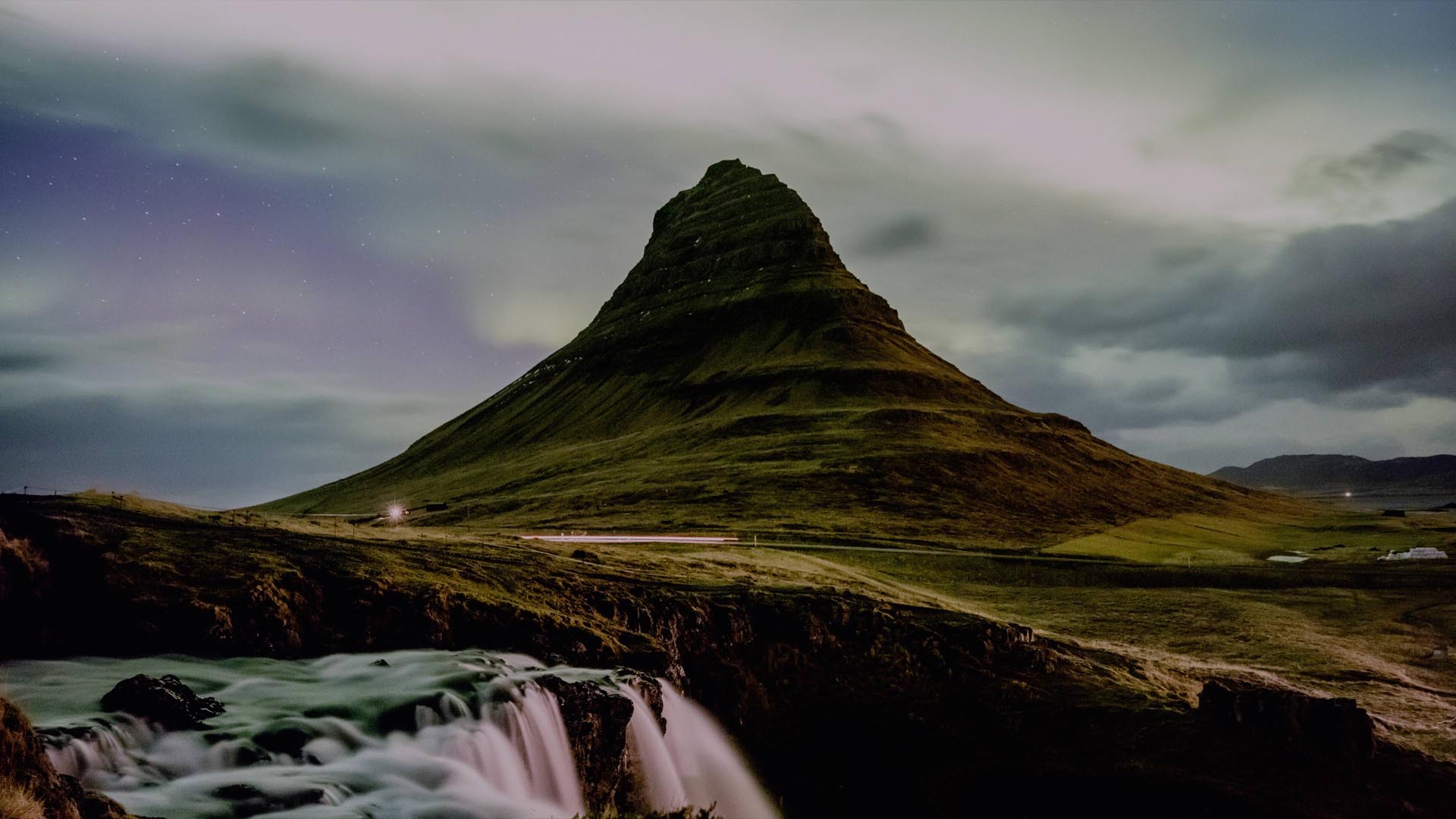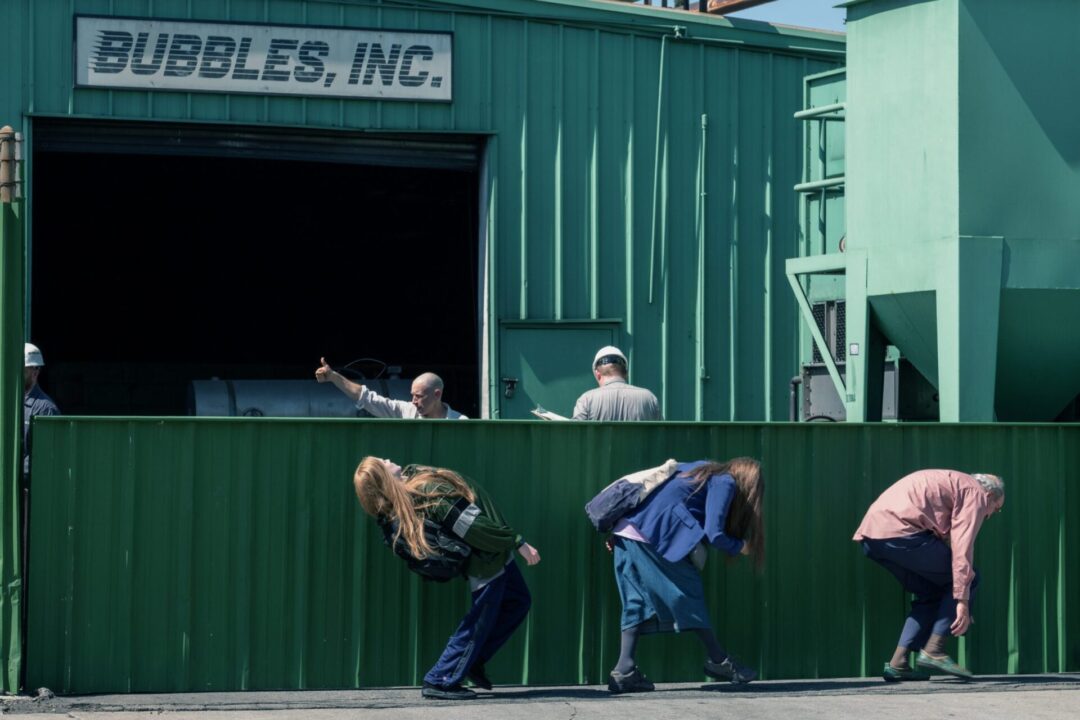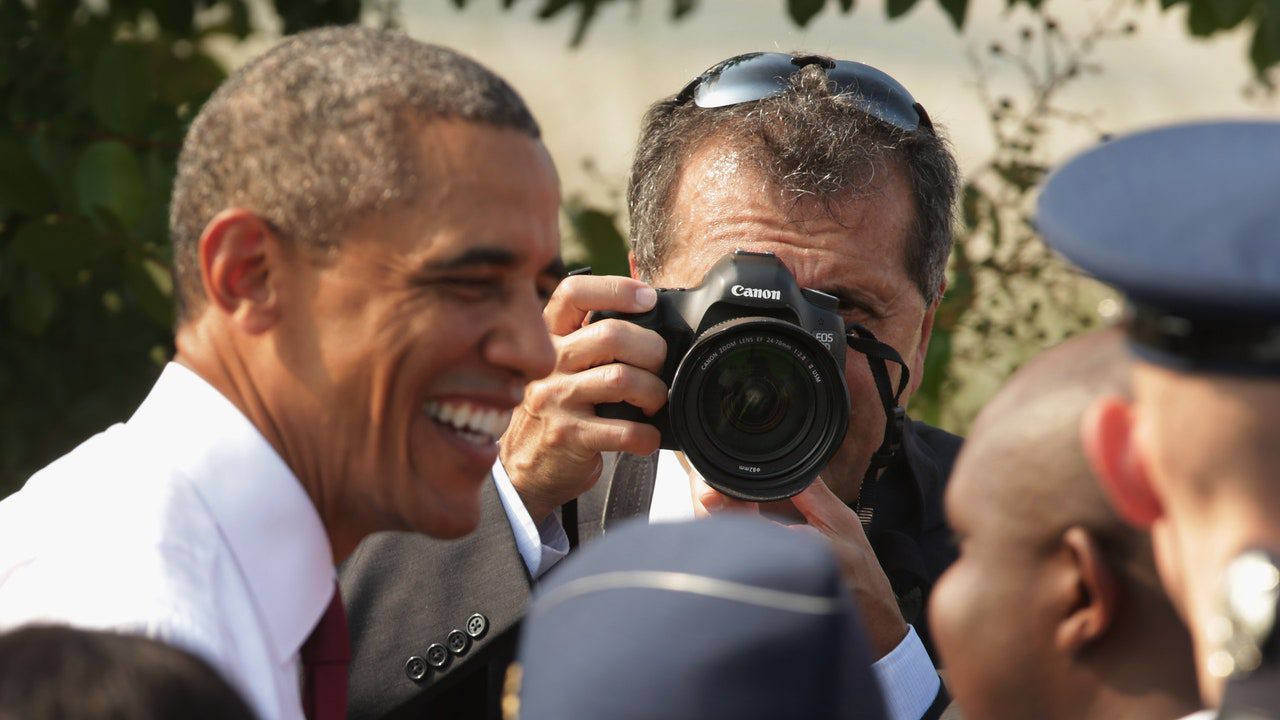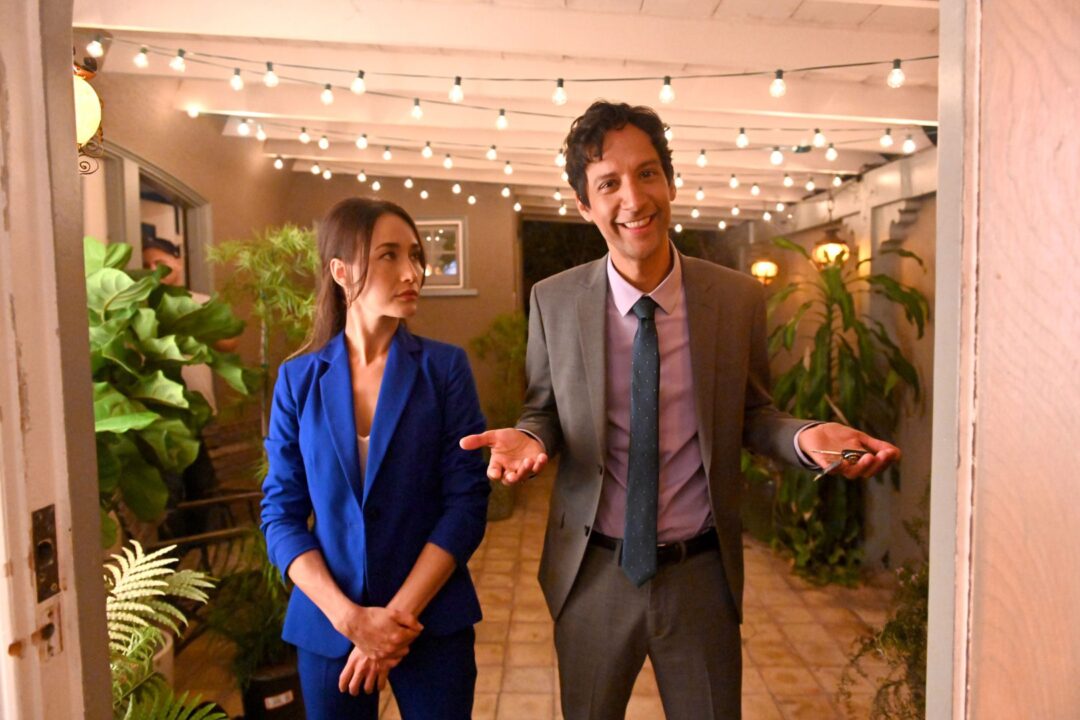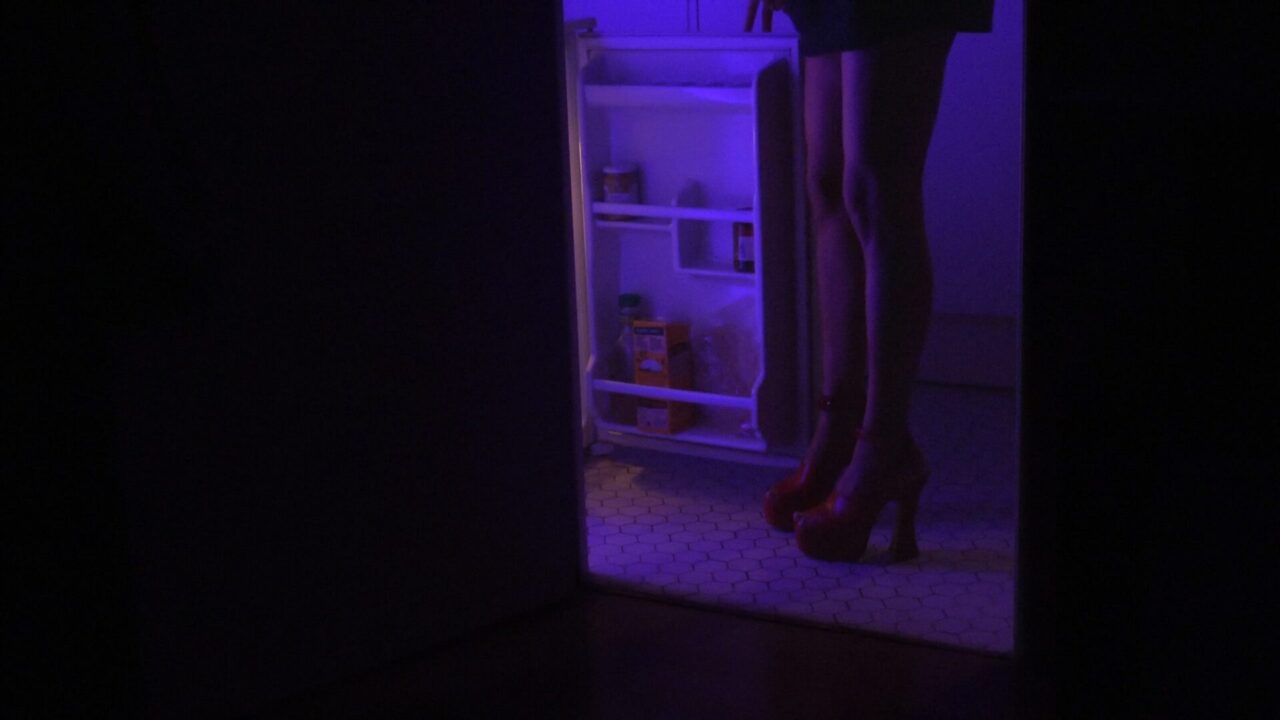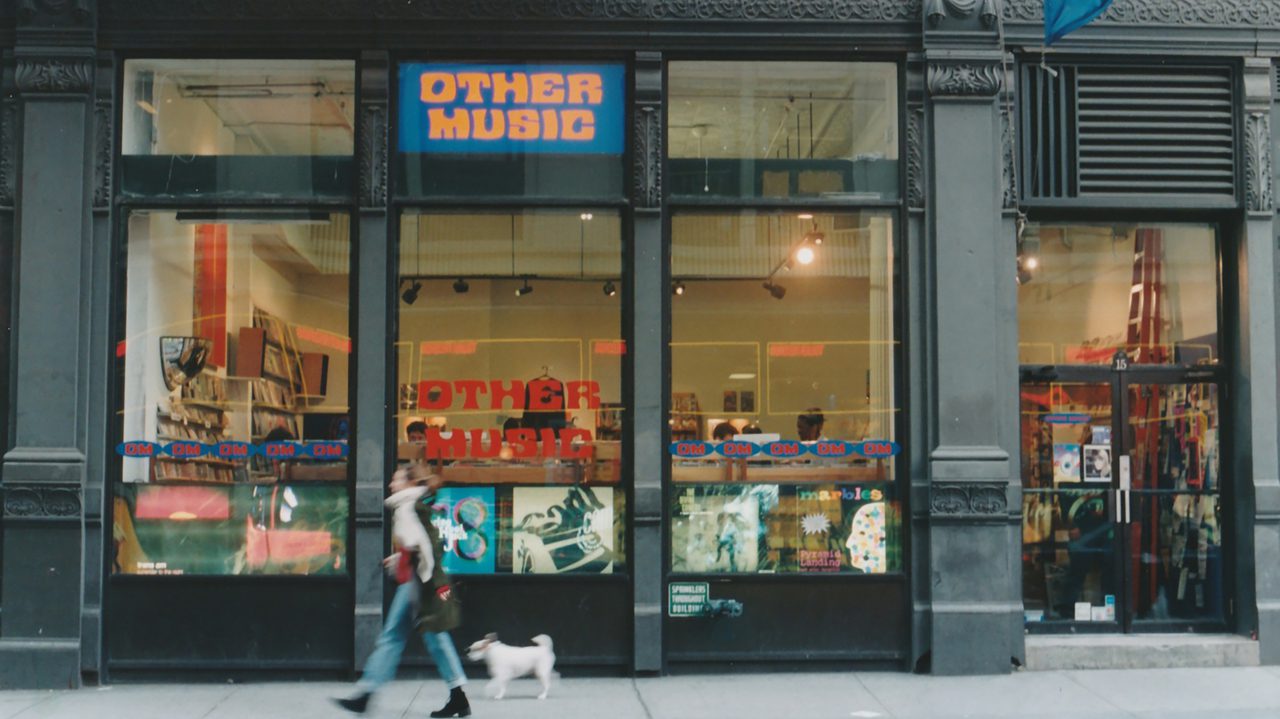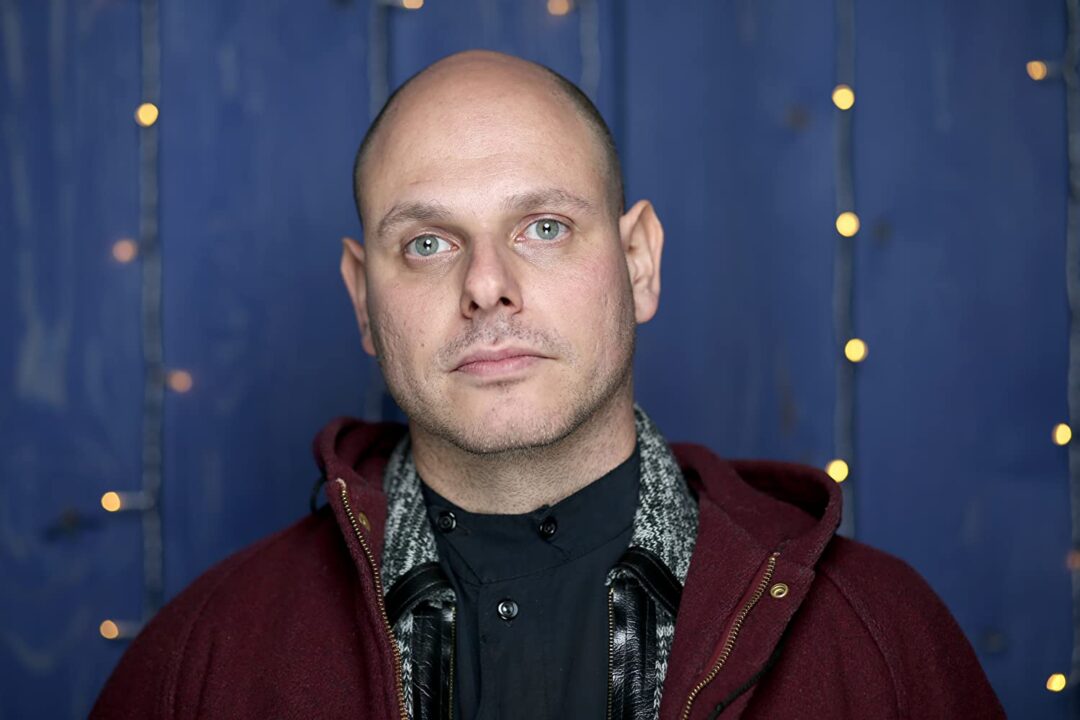'Dick Johnson Is Dead': Love Greatly, Live For the Moment, Eat the Chocolate Cake
Why do we give our love to another person when we just end up alone in the end? This hypothetical question has stumped lovers, poets, and philosophers for years but I believe it comes down to this one reason: we love because that's the only way to live.
Award-winning documentarian Kirsten Johnson (Cameraperson) shows that loving wholeheartedly may be painful but the reward of being vulnerable and sharing your life with another person far outweighs the eventual heartache of losing them in her most personal film yet, Dick Johnson is Dead. After seeing the mental decline of her aging father, Kirsten suggested making a film about him dying. In her unique way, she works through her emotional hang-ups and the not-so-distant reality of his death by enacting hilariously absurd death scenarios. To execute this, she enlists her 86-years-young, retired psychiatrist father, Dick Johnson, to play himself.
These surreal fantasy moments are sprinkled in throughout an otherwise emotional and at times, heartbreaking, storyline. Dick's memory continues to decline as the film progresses and Kirsten captures it all on camera. The laughter, the tears, the struggles, the chocolate cake. With Dick Johnson is Dead, Kirsten has created a darkly humorous awakening to the reality of death and the impact we all leave behind when we're gone. One of the most powerful moments comes from Dick's "funeral," where a group of his family and friends -who knowingly participated in this mock service- are gathered to reminisce about his impact on their lives. And even though Dick Johnson is alive and well, watching from a peephole behind the door, half of the room is in tears. That's the power of love.
I couldn't help but think about my dad while watching Dick Johnson is Dead. I'm so lucky to have such a close relationship with him and my worst fear is the thought of losing him one day. But I keep coming back to this quote from the film, "What loving demands is that we face the fear of losing each other." Love greatly, without regrets, because we only get one chance.
And at 2:56 pm, as soon as the film ended and I closed out of the Netflix browser, my dad texted me asking when I was going to come over and visit.
Distributed by Netflix, Dick Johnson is Dead is available to stream on Netflix this Friday, October 2, 2020.
'Chasing The Present' Review: A Consciousness Revolution
Quick Take: As Chasing The Present shows, when we finally come to the realization that we have all the answers, our problems don't feel so overwhelming.
I've always considered myself to be a self-questioning person. For better or for worse, I've never been satisfied with the status quo and the expectation of what society considers a "successful life." I studied Buddhism in college after years of fascination over the idea of the minimalist lifestyle, including non-attachment and impermanence. And I'll admit, these ideas sometimes led to nights of unsettling future projecting, but as soon as I was able to reel in my thoughts about tomorrow's unknown, I felt a simultaneous sense of control and relief wash over me. All I can do–all anyone can do–is focus on the present. This very moment. Right Now.
Chasing The Present, the new documentary from Mark Waters, feels like a crash course in the basics of spirituality and consciousness. It's easy to put yourself into the shoes of the main subject, James Sebastiano Jr, who travels the world on a journey of self-inquiry to explore the root cause of his lifelong battle with mental health issues. The gurus, healers, and therapists (including Russell Brand) remind James, and in turn, us, that the only way to end suffering is to break free from attachment. The ego has gotten too comfortable running the show, and when the ego is bruised or starved for attention, we tend to act from a selfish place. Over time, this selfishness leads to unhappiness and emptiness that goes against the only thing (besides food & water) that we as human beings have been biologically conditioned to need: connection. A life lived without a pure connection to oneself and the world isn't a very fulfilling life at all; there's a reason why those on their death beds never regret spending time with loved ones while the career milestones and material wealth end up seeming wholly unimportant.
It's easy to distract ourselves from the awful events happening in the world by turning on the latest reality TV dating show or jumping on any number of social media platforms (highly recommend Netflix's The Social Dilemma to dive deeper into this topic), especially right now. But the only way to get through these tough times is to acknowledge that we have the power to tap into our consciousness and see beyond the hatred and despair and heal ourselves. Beyond anxiety, beyond thought, freedom is possible.
Distributed by 1091 Pictures, Chasing the Present is available to rent on iTunes, Vimeo, and more, today.
'Kajillionaire' Review: A Family of Scammers Long For Connection
I couldn't believe that I was going to miss the world premiere screening of Kajillionaire while I was at Sundance earlier this year. I caught the flu the night before and was physically unable to move, bedridden and devastated to miss this once in a lifetime event. After all, Miranda July is one of my favorite filmmakers and I cursed the cruel irony of skipping the only film that I had really wanted to see at the festival. Fast-forward nine months (and a lot of unexpected life changes later), I finally saw Kajillionaire, and honestly, the timing couldn't have been better.
Writer/Director Miranda July is known for her charmingly original stories about relationships and this one is no different. In Kajillionaire, a family of Los Angeles-based con artists Robert (Richard Jenkins), Theresa (Debra Winger), and their daughter, Old Dolio (Evan Rachel Wood), make a life for themselves by scamming and stealing from a society they claim is phony and foolish. During one desperate "Get Rich Quick" scheme, the family befriends Melanie (Gina Rodriguez), a single woman who doesn't hesitate to help them with their next scam. However, the trust between them gets tested after a couple of shady encounters cause Old Dolio to question her allegiance to her family and the life she thought was predetermined for her.
A good film will always have these three qualities: a strong directorial voice, a clear and coherent script, and a solid cast. Kajillionaire has all of these and then some. Miranda July's deeply felt and visionary style is undeniable with its ethereal, yet down to earth charm. July's tender feelings seep onto the screen, creating a universally emotional bond between the filmmaker and her audience. For as unlikable as their characters' actions are, Richard Jenkins and Debra Winger play Robert and Theresa with a sense of compassion that makes us pity them rather than despise them. Gina Rodriguez gives a complex performance as Melanie, peeling away more layers as the film progresses. But hands down, it's Evan Rachel Wood who steals the show as the totally awkward, extremely guarded Old Dolio, a young woman who ultimately just wants to be loved.
At its core, Kajillionaire is a film about lonely people slowly letting down their guard to accept the gift of human connection. Now more than ever, at a time when human connection is met with a risk warning, this arthouse indie comedy feels like a warm, much-needed hug.
Distributed by Focus Features, Kajillionaire opens in theaters this Friday, September 25.
Obama's White House Photographer Captures What's Different With This Current Presidency, in 'The Way I See It'
Immediately after the film ended, I texted my brother, Ryan. "Just watched The Way I See It for review and wow. Easily one of my favorite films of the year."
It's been claimed that Pete Souza created the best photo archive of a President that's ever been done, and I believe that based solely on the chills I got from watching Dawn Porter's documentary, The Way I See It. The photographer, who is charmingly referred to as The King of Shade on Instagram for his Trump trolling posts, stayed publicly apolitical throughout his entire career as the Official White House Photographer during the Ronald Reagan and Barack Obama presidencies. Like a fly on the wall, he not only documented some of the most influential and powerful moments in American history but humanized the leaders in these roles. Since the Obama era ended, the abuse towards and damage to journalists and the free press by our current President has been completely disheartening. Having reached his breaking point, Pete is finally speaking out against the atrocity of today's leadership through his secret weapon: his photos.
Through his lens, Pete shares intimate moments from Reagan and Obama's terms, the most powerful of which are the small, fleeting moments that have never been seen before. Breathtaking images that are beautiful beyond words portray Obama as more than just the 44th President of the United States, but as your typical dad, husband, and human. The juxtaposition of these personal photos from the Obama era compared to the staged photo-ops of today- since Trump doesn't allow personal photogs access- is a stark reminder that empathy, humility, and communication are the qualities that make a leader honorable.
Perhaps the biggest takeaway is Pete's notion about the role of a leader. Not everyone will agree with your policies, but your behavior should always be respected. This goes without saying that Pete's comments are pointed at one person in particular, but this simple yet common sense reminder applies to everyday situations. A truly remarkable film, The Way I See It is proof that the impact of a still photo can say a lot more than words.
Distributed by Focus Features, 'The Way I See It' is in theaters this Friday, September 18th, and premieres on MSNBC October 9th at 7:00 pm.
'The Argument' is Forced Déjà Vu of Semi-Funny Proportions
Quick Take: I wanted to like this film, I really did, but the biggest hurdle in giving The Argument anything other than a mediocre review is the fact that the characters just aren't likable.
Director Robert Schwartzman's latest indie film is an offbeat comedy about pride and poor communication, but unfortunately, The Argument plays more like a slightly uncomfortable improv show. I wanted to like this film, I really did, but the biggest hurdle in giving The Argument anything other than a mediocre review is the fact that the characters just aren't likable. And when we're stuck with these characters in one room for the duration of a film, they have to be likable.
The Argument is a humble production that tells the story of how Jack (Dan Fogler) and his girlfriend, Lisa (Emma Bell) get into a petty argument during a night in with some friends. Jack and Lisa have different recollections of who is in the wrong, and because they can't just be adults and settle a disagreement like grown-ups, they insist that they replay the night over, and over, and over again with their friends in hopes that they will suddenly realize who was right. Thank goodness someone in the group literally has a photographic memory and could just tell us who was "right," but that is never utilized for reasons unknown.
There are some standout performances, notably from Danny Pudi and Maggie Q, but the rest of the cast plays characters that are too emotionally unintelligent to be believable or likable. Which is a shame, because the potential is there. The Argument may not be his best, but if you're in the mood for a Schwartzman lighthearted comedy, may I recommend his directorial debut Dreamland.
Distributed by Gravitas Ventures, The Argument is now available to rent on VOD.
Miu Miu and MUBI Present Mati Diop's Latest "Women’s Tales" Film, 'In My Room'
The curated streaming service MUBI and Italian high-fashion brand Miu Miu have partnered to make In My Room available to stream worldwide, shortly after its world premiere at the Venice Film Festival. In My Room, created and directed by Mati Diop (Atlantics) during confinement, is the twentieth short film in the ongoing Women’s Tales series.
“When Miu Miu proposed to me to make a film for Women’s Tales during confinement, in the midst of a health and social crisis, I thought it was a very delicate exercise but also a challenge that confronted me with essential questions about my practice as a filmmaker," said Diop. “What story can I tell now, with minimal means, alone in my studio, that resonates with what the world is going through while being intimate?”
Since 2011, Women’s Tales is an ongoing series of short films commissioned by Miu Miu and directed by today’s most distinctive female filmmakers, who invent beautiful, strange worlds inhabited by women’s idiosyncratic imaginations. With a brief to look both critically and lovingly at femininity in the 21st century, these short films embrace the many complexities and contradictions that make up women’s experiences today. The full Women’s Tales collection, which also includes work from Agnés Varda, Chloë Sevigny, Haifaa Al-Mansour, Ava DuVernay, and Lynne Ramsay, is available in the MUBI LIBRARY.
The twenty Women’s Tales coming to MUBI are:

Shako Mako, by Hailey Gates (English language. Italian subtitles)

The Wedding Singer’s Daughter, by Haifaa Al-Mansour (Arabic language. English and Italian subtitles)
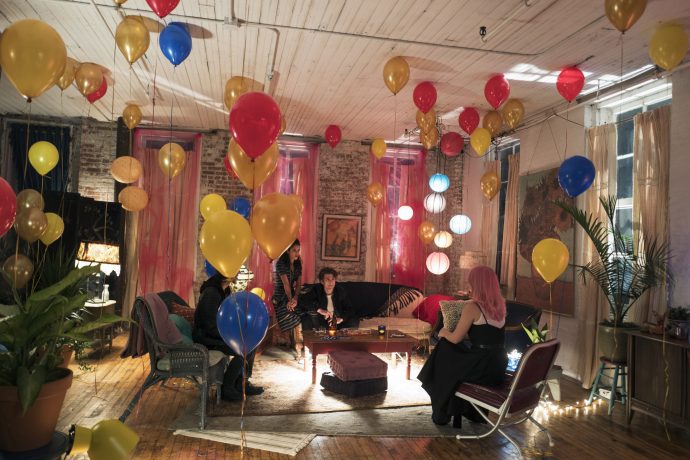
Hello Apartment, by Dakota Fanning (English language. Italian subtitles)
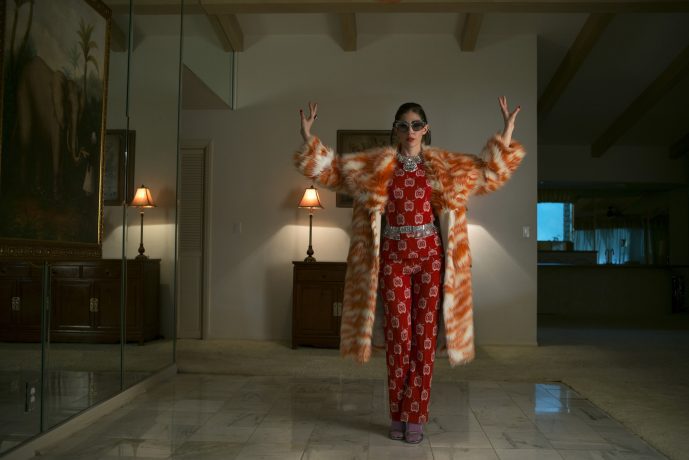
(The [End) of History Illusion], by Celia Rowlson-Hall (English language. Italian subtitles)

Carmen, by Chloë Sevigny (English language. Italian subtitles)
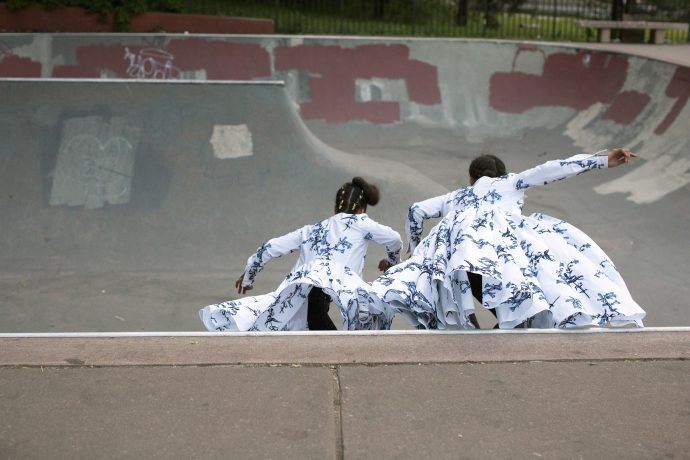
That One Day, by Crystal Moselle (English language. Italian subtitles)
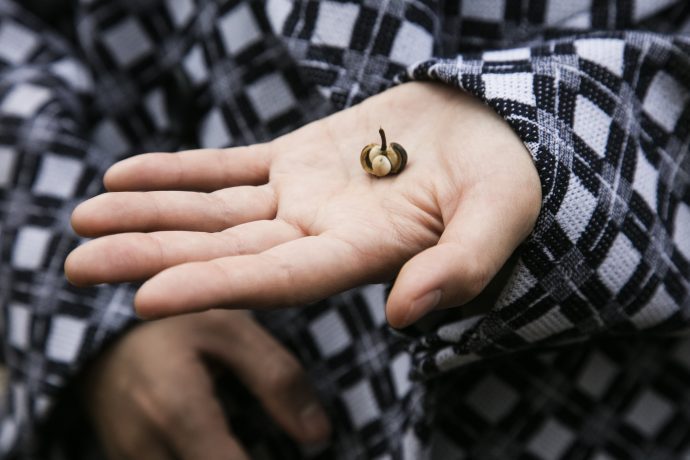
Seed, by Naomi Kawase (Japanese language. English and Italian subtitles)

Les 3 Boutons, by Agnès Varda (French language. English subtitles)
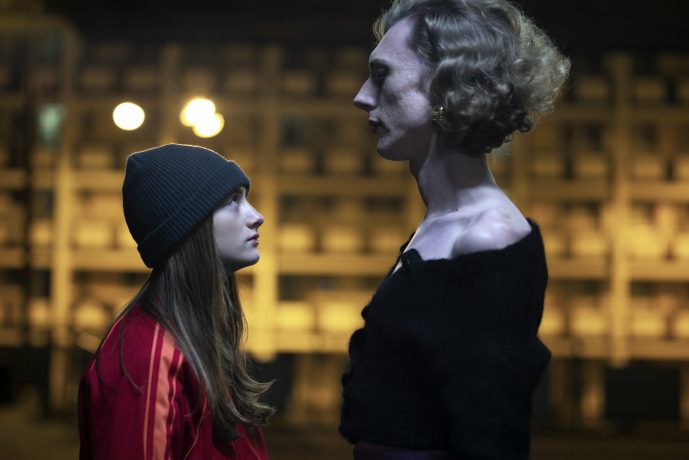
Nightwalk, by Małgorzata Szumowska (No dialogue)
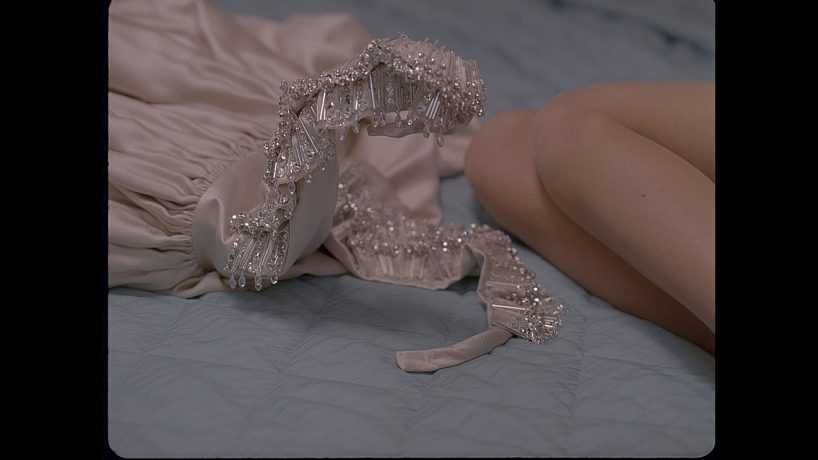
De Djess, by Alice Rohrwacher (No dialogue)
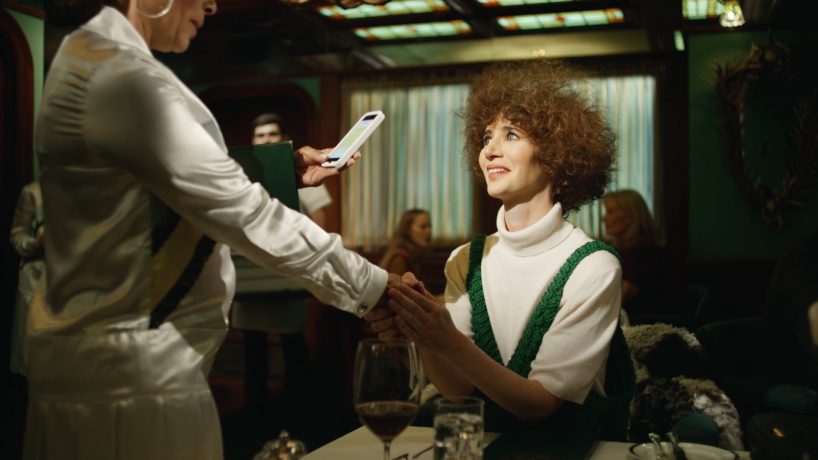
Somebody, by Miranda July (English language. Italian subtitles)

Spark and Light, by So Yong Kim (English language. Italian subtitles)
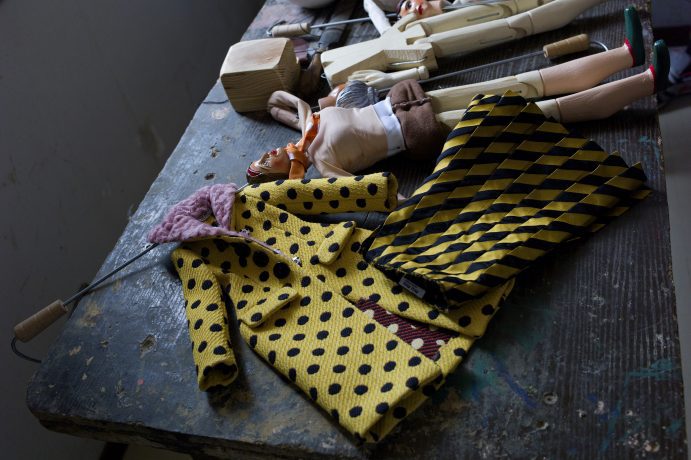
Le Donne della Vucciria, by Hiam Abbass (No dialogue)
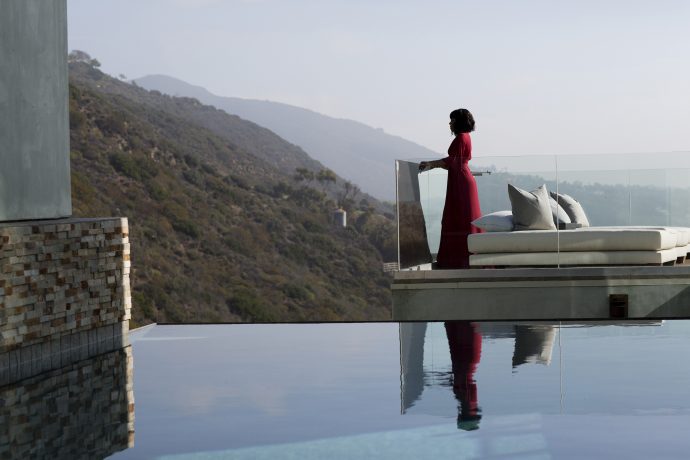
The Door, by Ava DuVernay (No dialogue)

It’s Getting Late, by Massy Tadjedin (English language)
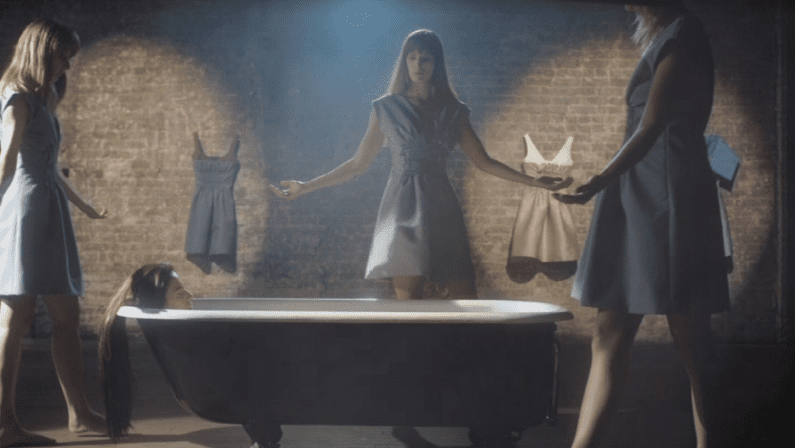 The Woman Dress, by Giada Colagrande (No dialogue)
The Woman Dress, by Giada Colagrande (No dialogue)

Muta, by Lucrecia Martel (No dialogue)

The Powder Room, by Zoe Cassavetes (No dialogue)
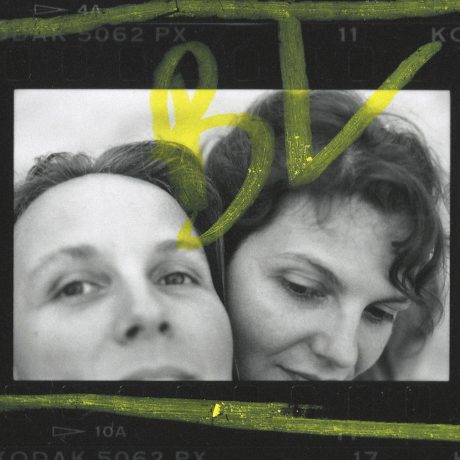
Brigitte, by Lynne Ramsay (English language. Italian subtitles)
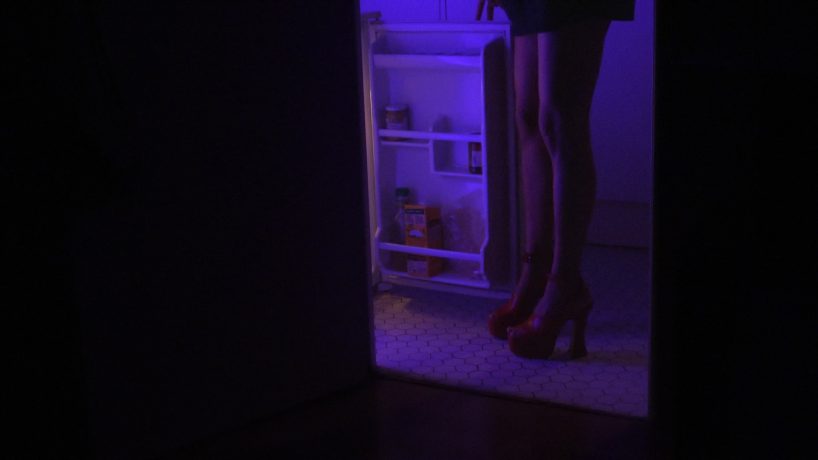
In My Room, by Mati Diop (French language. Subtitles: English, French, German, Italian, Japanese, Korean, Chinese, Portuguese (Brazilian), Spanish, Turkish)
Other Music Helped Cultivate Bands Like Vampire Weekend and Animal Collective–Before Being Forced to Close Their Doors
Quick Take: Whether you were lucky enough to sort through their highly specialized music selection or just a fan of early 00s bands like The National or TV on the Radio (who credit this prolific NYC record shop with widening their music knowledge)–Other Music is a must-see so that their story lives on.
Benicio Del Toro called his visits to the store a religious experience. Jason Schwartzman was constantly inspired by its hyper-knowledgeable staff. It's also where Ezra Koenig of Vampire Weekend "literally discovered new genres of music" because of how everything was uniquely and specifically categorized. Any music buff will tell you that Other Music in NYC was nirvana (pun intended).
The self-titled documentary from co-directors Puloma Basu and Rob Hatch-Miller follows the last 6 weeks of this iconic and legendary indie record shop before they were forced to close their doors for good in June 2016. Increasing rent prices in Manhattan's East Village made it impossible to stay afloat and the trend towards streaming was a battle that shop owners Josh Madell and Chris Vanderloo knew they couldn't win. It's such a shame that culturally significant safe havens like Other Music aren't invincible, and their loss hits hard. Interviews with devoted customers and artists like Matt Berninger of The National, Tunde Adebimpe of TV on the Radio, and Regina Spektor all speak from the heart about how Other Music influenced their careers and lives for the better.
Other Music was the quintessential place for people in NYC who appreciated music to spend hours racking the shelves for otherworldly discoveries, rare gems, and human connection. They hosted in-store performances from No Age, St. Vincent, Conor Oberst, and Neutral Milk Hotel to name a few, which the film shows with great nostalgia. If you're a fan of any of the bands I've mentioned, including Animal Collective, Interpol, Yeah Yeah Yeahs, William Basinski, Sharon Van Etten, and The Rapture, you'll find so much joy in watching this film. Physically, Other Music is no more but its spirit lives on. After a canceled theatrical run due to COVID, the filmmakers partnered with record stores and theaters for a Virtual Cinema run.
Distributed by Factory 25, Other Music is available on Amazon Prime, iTunes, Google Play, etc. today.
Eugene Kotlyarenko: "There can only be two relationships: Off-social media and On-social media"
Already known as a filmmaker in which audiences should expect the unexpected, Spree follows suit in its boundary-pushing style. This is one film you're likely never to forget. In our exclusive interview, Kotlyarenko talks about his relationship with social media, working with actor Joe Keery, and how he would describe the film in emojis. Spree is now in select theaters, drive-ins, on digital and on-demand.
Many people can take social media too seriously with overly curated and artificial profiles, especially in LA. In Kurt's case, it's the only source of validation he craves. What is your relationship with social media and influencer culture like?
There can only be two relationships: Off-social media and On-social media. I’m still on, which makes me a participant in the sort of attention economy the film is indicting. Not that I’m doing anything horrific like Kurt, but maybe like Jessie, I’m complicit in the system, while trying to think of myself as “different” from everyone else.
Joe Keery nails the role of the struggling pseudo-influencer, which is hilarious because he has over 7 million Instagram followers "IRL." What was your dynamic with Keery like on-set, how did you two collaborate and help him come into this deranged character?
Joe is the sweetest and most creative person. We began collaborating months before the shoot - watching reference videos and making some Kurt reviews and tutorials of our own. He brings an enormous level of respect, enthusiasm, and diligence to set and once we start shooting he’s able to modify beats and improv in a really inspiring way. Many of the lines he made up, ended up in the movie.
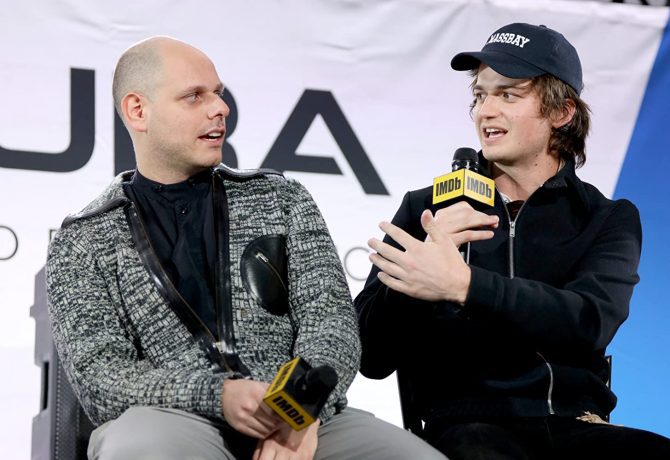
This film is such a visual whirlwind, what did your mood board look like while writing the script, and in the general pre-production process?
I don’t really believe in mood boards or visual references because I don’t want anyone, including me, to get bogged down in how stuff used to look or some cool thing someone else did. I’m trying to encourage everyone on the crew to help me come up with a new language to make films and be formally adventurous. That being said, I did provide the cast and crew with a Google Drive of 10 movies I found to be influential and said “let’s try to capture this spirit.” A few in that drive were Taxi Tehran, The King of Comedy, Dossier 51, Henry: Portrait of a Serial Killer. For the bigger set pieces like the freeway chase and the junkyard, we did make storyboards because I knew there was very specific coverage we would need to make that work in terms of blocking and choreography and camera manipulation.
What do you hope people take away after watching Spree? And what impact do you as a filmmaker hope to leave on the independent film community?
I hope the first thing you experience is just excitement, laughter, tension, and joy while watching it. I know the subject matter can be intense and reflective of horrific stuff, but usually, when I step away from a movie that has a great energy to me I sort of soak that in, regardless of the themes. Then when you step away from it, I’d like people to reflect on their relationships to their phone, their virtual identities, and their thirst for social media validation.
As a filmmaker, I hope we are all inspired to expand the relatively narrow language of cinematic storytelling up until now. And to keep in mind that if we are being experimental with form, it doesn’t mean we have to alienate viewers from a story well told. I would also say that 10 years ago, I made a movie entirely by screen-capturing Skype and Gchat video conversations I was having with friends, who didn’t know I was acting and then edited it together over the course of two weeks. It technically cost me $0, beyond my frugal survival... So if you don’t have the resources to stage high-speed chases or get access to established actors or even have high-end equipment, don’t let that stop you from telling stories with the resources that you do have all around you.
And finally, what emoji(s) would you use to describe Spree?
![]()


